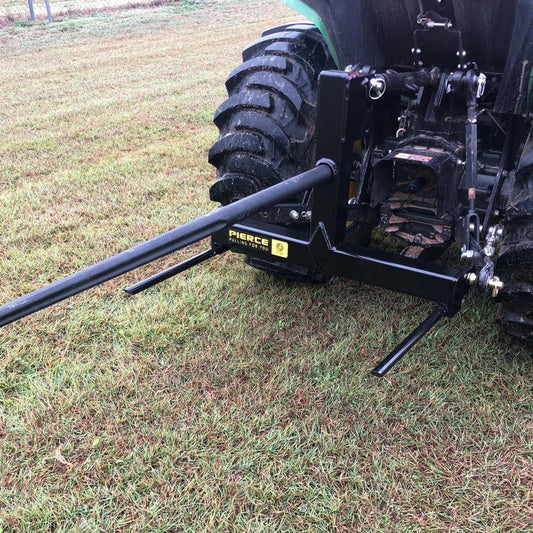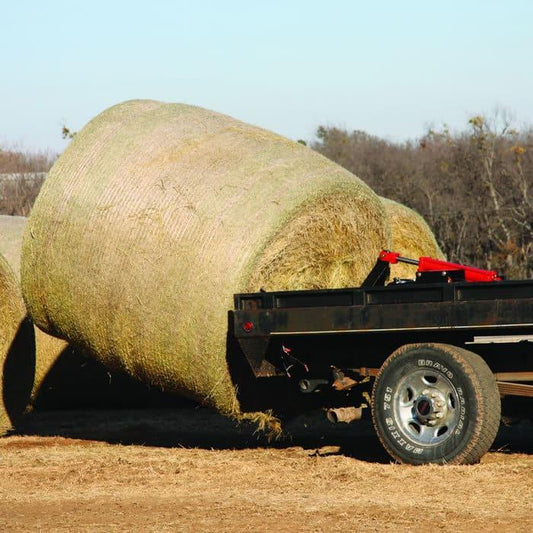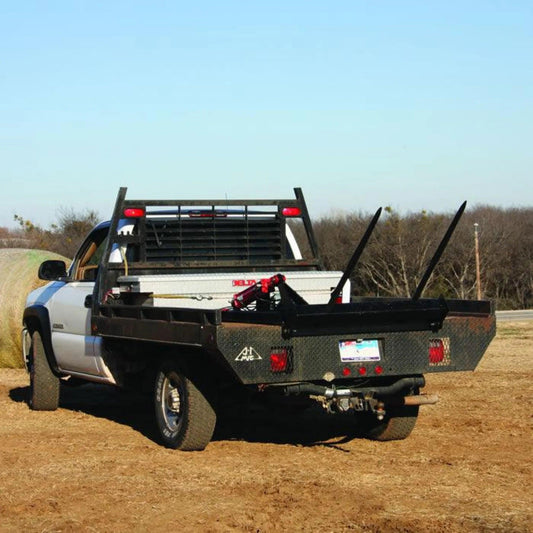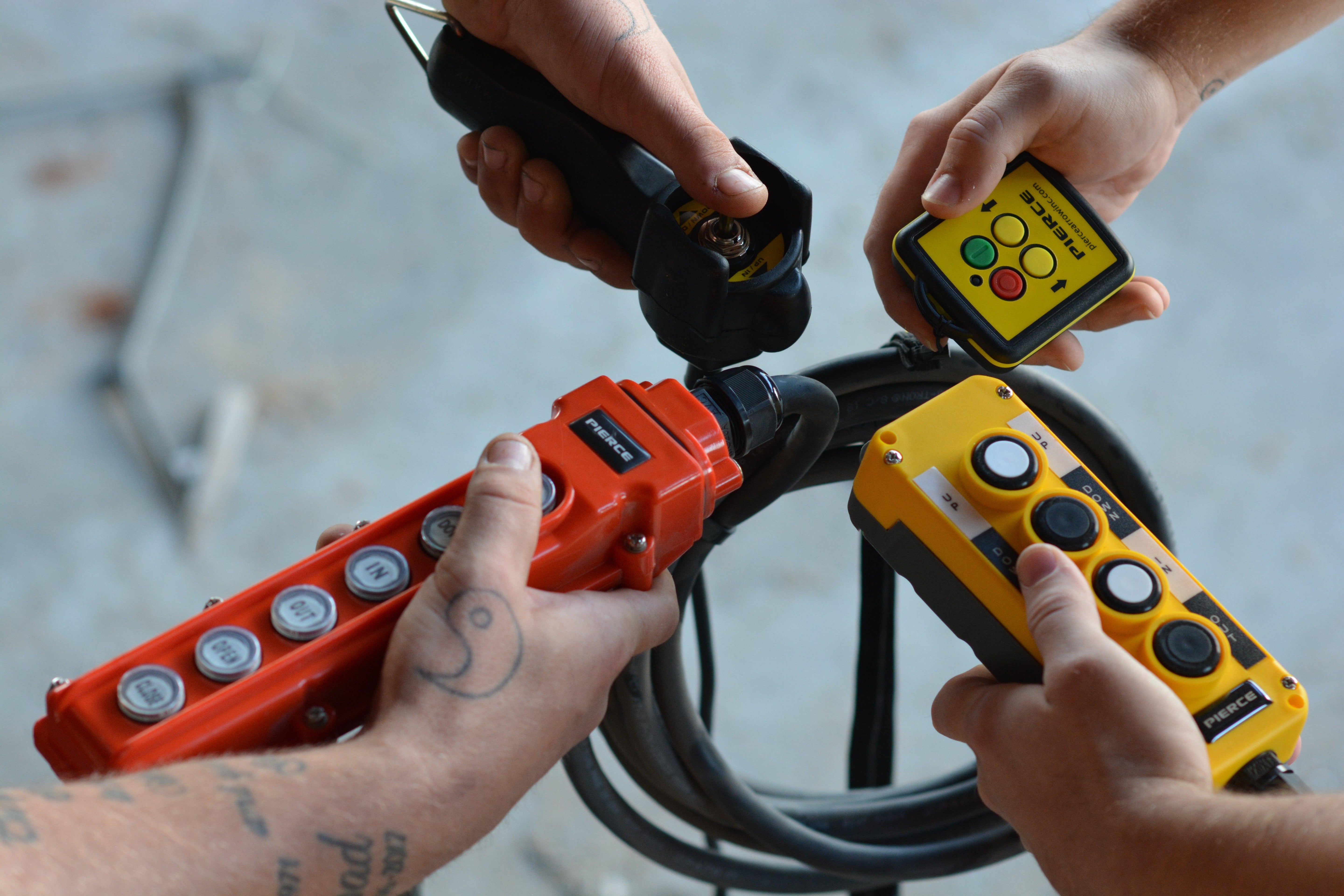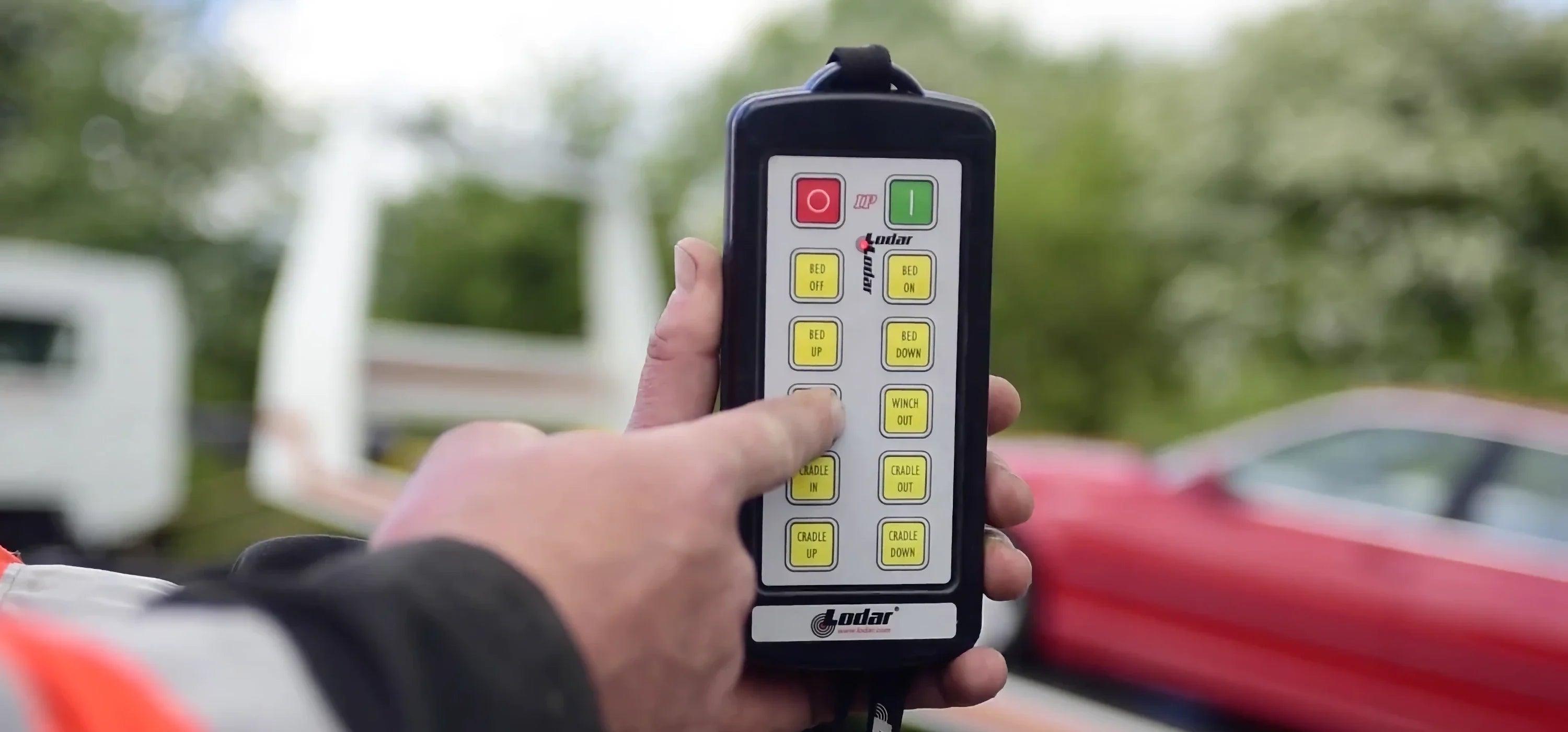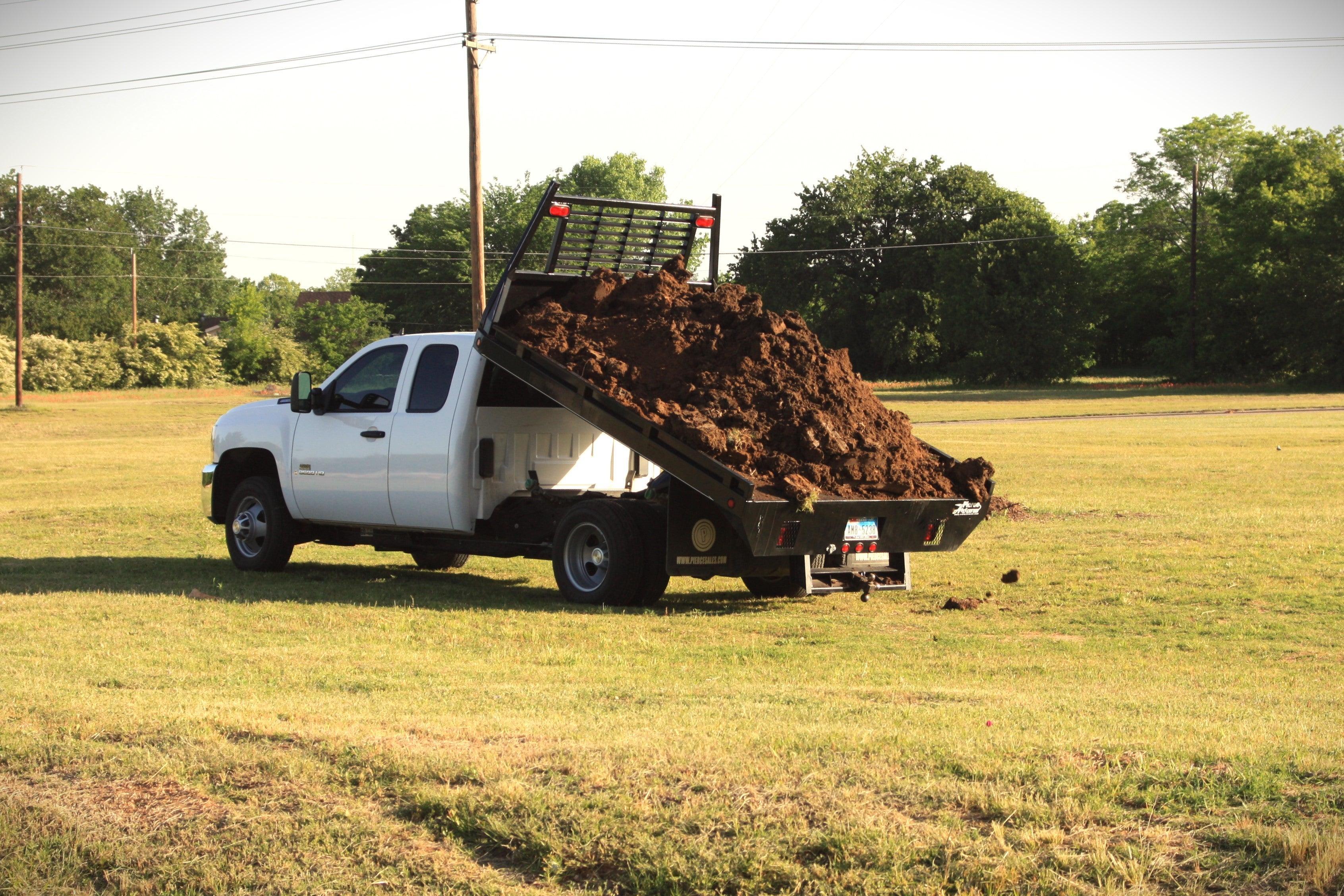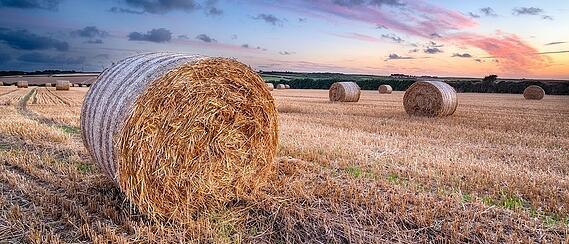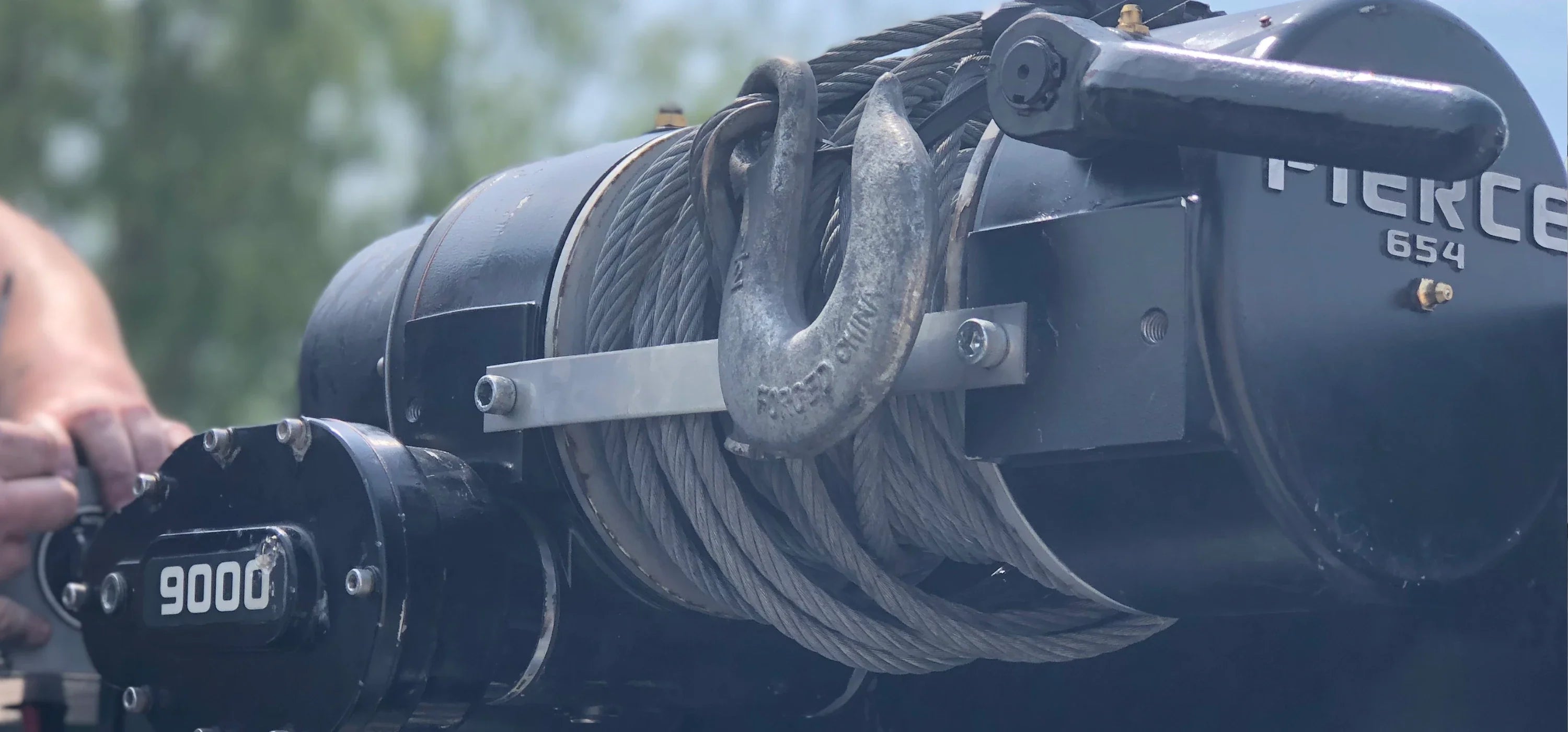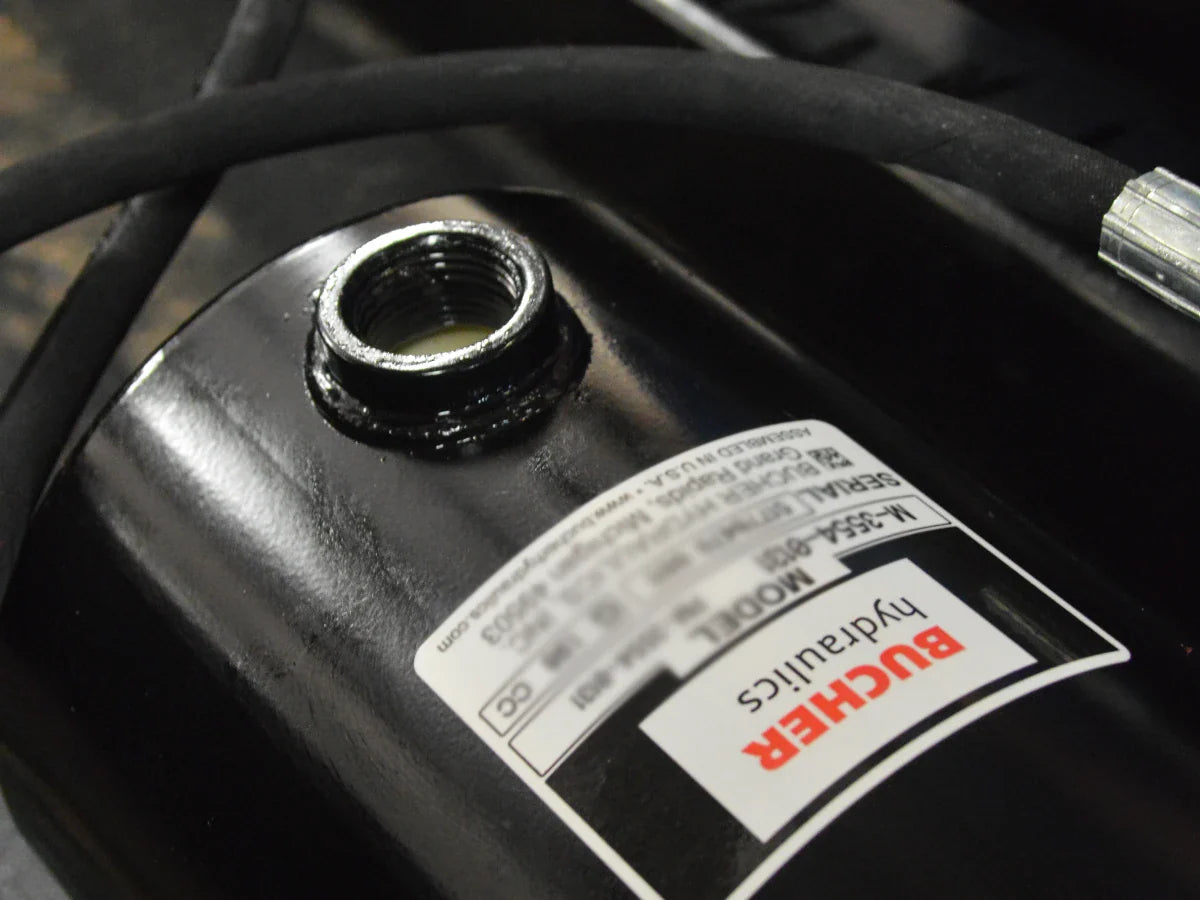Finding the Right Bale Mover
Having trouble deciding on the best hay bale moving equipment for your needs? Let our comparison guide help you think through and evaluate what would work best for your ranching needs. Our guide is tailored towards round bales.
Three Point Tractor Attachment
Three point attachment
Tractor attachments are ideal for small to medium ranches with existing tractors, offering a budget-friendly solution for efficient bale handling.
CAPACITY: 1 bale
COST: $500 to $1,000
INSTALLATION: Attaches directly to the tractor's three-point hitch.
OPERATION: Utilizes tractor hydraulics for lifting and moving bales.
PROS:
- Cost-effective and affordable for most budgets.
- Easy to purchase and compatible with existing tractors.
- Highly versatile for small-scale operations.
CONS:
- Operator exposed to weather during loading.
- Slow for long-distance travel on public roads.
- Limited maneuverability in tight or uneven terrain.
- Potential for increased tractor wear with frequent use.
OPTIONS: Efficient bale spear available for seamless tractor connection.
SKU:
ABS3PTLDK
3 Point Tractor Bale Spike
Take the struggle out of moving hay with the PIERCE 3 point bale spear. Made with high quality steel and boasting a useable spear length of 44 inches (48 inches overall), this product can handle round bales weighing up to 2500 lbs. Plus, with a 2 year warranty and a weight of just 78 lbs, it's a reliable and lightweight solution for your baling needs.
Hay Buggy
A trailer that hitches to your tractor or truck
Hay buggies suit small ranches needing an affordable, simple trailer for short-distance bale transport without modifying vehicles.
CAPACITY: 1 bale
COST: $500 +
INSTALLATION: Easily hitches to a tractor or truck.
OPERATION: Uses a hand-crank or small electric winch to hoist bales.
PROS:
- Low-cost option for basic bale transport.
- No truck bed conversion required.
- Compact and lightweight for easy storage.
CONS:
- Challenging to maneuver when backing into bales.
- Limited visibility while towing.
- Manual winch operation may cause physical strain.
- Potential safety risks from winch slippage if not handled carefully.
Truck Mount Hay Spears
Sits on your gooseneck hitch or mounts to bed frame.
Truck mount hay spears are well-suited for ranchers needing a durable, weather-protected solution for efficient bale transport over longer distances.
CAPACITY: 1 bale up to 2,500 lbs
COST: $2,150 to $2,500
INSTALLATION: Requires two people or a chain hoist; connects to gooseneck ball or bed frame. Spears are removable, with power and ground wires linked to the battery.
OPERATION: Built-in hydraulic power pack raises and lowers bales.
PROS:
- Simple installation with transferable design across trucks.
- Fast and efficient for long-distance transport.
- Operator protected from weather during loading.
- Enhanced stability for heavier bales.
CONS:
- Gooseneck mount must be removed for trailer hauling.
- Frame mount leaves slide-on guides in bed when not in use.
- Wiring may require electrical expertise.
- May limit truck bed use for non-hay tasks.
OPTIONS: We offer both a gooseneck mount and a bolt-in mount bale spear for your truck. The hydraulic power pack is included with both along with a wired control and wiring harness kit.
Custom Bale Bed
Custom flatbed with built-in bale spears
Custom bale beds are optimal for ranchers prioritizing comfort and bale protection, ideal for mid-sized operations with dedicated vehicles.
CAPACITY: 1 bale
COST: $6,000 to $10,000
INSTALLATION: Requires professional installation.
OPERATION: Operates via hydraulic power pack or engine-driven hydraulics.
Custom Arm Bale Bed
Custom flatbed with bale arms for unrolling
Custom arm bale beds are perfect for larger ranches seeking efficient feeding solutions with multi-bale capacity and unrolling functionality.
CAPACITY: 1 to 2 bales
COST: $8,000 to $20,000
INSTALLATION: Requires professional installation.
OPERATION: Uses hydraulic power pack or engine-driven hydraulics for lifting and unrolling.
PROS:
- Handles multiple bales and supports unrolling for feeding.
- Fast and weather-protected operation.
- Reduces hay waste through precise unrolling.
CONS:
- Most expensive option, requiring significant investment.
- Permanent truck bed conversion needed.
- Complex operation may require operator training.
- Increased fuel consumption due to added weight.
Gooseneck Hay Trailer
Hay hauling trailer for multiple bales
Gooseneck hay trailers are best for large-scale ranches needing to transport multiple bales efficiently, ideal for operations with existing loading equipment.
CAPACITY: 4 to 14 bales
COST: $6,000 to $21,000
INSTALLATION: Connects to gooseneck hitch.
OPERATION: Designed for transport only; requires separate equipment (e.g., tractor) for loading/unloading.
PROS:
- High capacity for bulk bale transport.
- Fast and efficient for long-distance hauling.
- Scalable for large operations to reduce trips.
CONS:
- Expensive and requires gooseneck-compatible vehicle.
- Dependent on separate loading/unloading equipment.
- Significant storage space needed when not in use.
Key Factors to Consider When Choosing Hay Bale Moving Equipment
Selecting the appropriate bale mover involves evaluating several critical aspects to align with your ranch's scale, budget, and workflow. Below is a structured overview of essential considerations, tailored to round bale operations:
- Bale Specifications (Size, Weight, and Type): Determine the typical dimensions and weight of your bales (e.g., up to 2,500 lbs for heavier loads). Opt for equipment with sufficient capacity to avoid overloading, which can lead to equipment failure or safety risks. For instance, single-bale options like truck mount spears suit lighter, individual handling, while multi-bale trailers are ideal for bulk transport.
- Vehicle and Tractor Compatibility: Ensure the equipment matches your tractor's horsepower (e.g., at least 40-100 HP for balers and movers) and hitch type. Consider lift capacity—aim for 50% more than bale weight for stability—and stopping power for loaded trailers.
- Operational Efficiency and Terrain: Factor in travel distance, speed, and terrain. Hydraulic systems offer smoother operation on uneven ground, while manual options like hay buggies may suffice for flat, short-haul tasks but could increase labor time.
- Safety and Ergonomics: Prioritize features that minimize risks, such as stable mounts, weather protection for operators, and secure winches to prevent slippage. Always clear work areas and follow manufacturer guidelines to reduce injury potential.
- Cost, Maintenance, and Longevity: Balance upfront costs with ongoing expenses like hydraulics maintenance or fuel efficiency. Durable materials (e.g., high-quality steel) extend lifespan, and transferable designs preserve resale value.
- Farm Scale and Additional Needs: Small ranches may benefit from versatile, low-cost attachments, while larger operations require high-capacity, multi-functional equipment like arm beds for unrolling and feeding. Consider storage space for off-season use and scalability for future growth.
For personalized recommendations based on your specific setup, contact our team or explore our range of bale spears and beds designed for reliability and ease. Our experts can assist in matching equipment to your needs, ensuring optimal performance for your hay handling operations.
This guide has been compiled and refined based on standard agricultural equipment specifications and best practices, drawing from general industry knowledge to ensure originality and accuracy. It focuses on round bale handling and provides balanced comparisons to assist ranchers in decision-making. All content is presented in an original format for your use.

